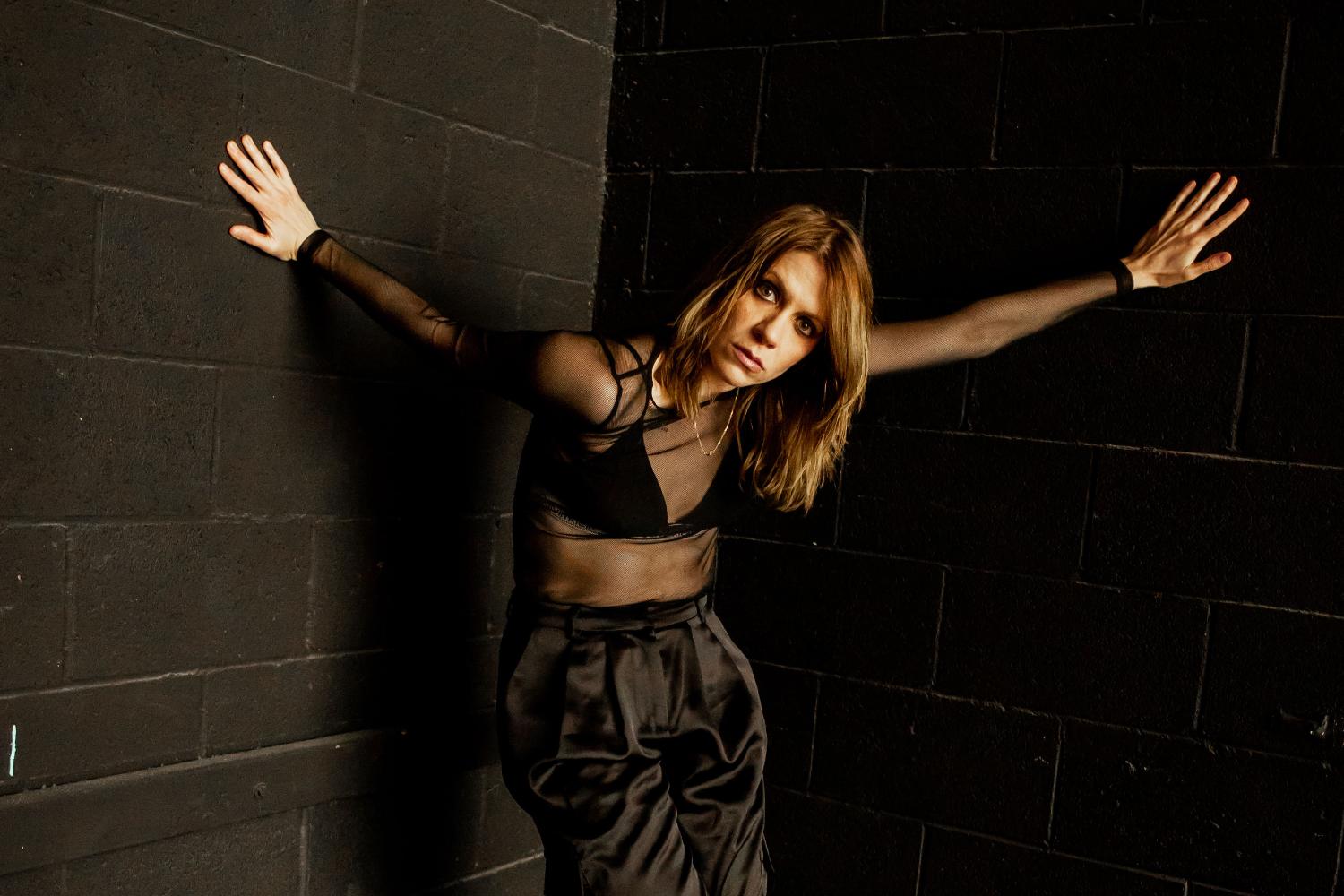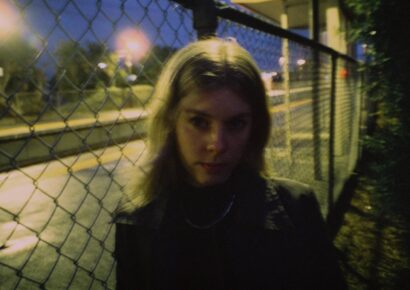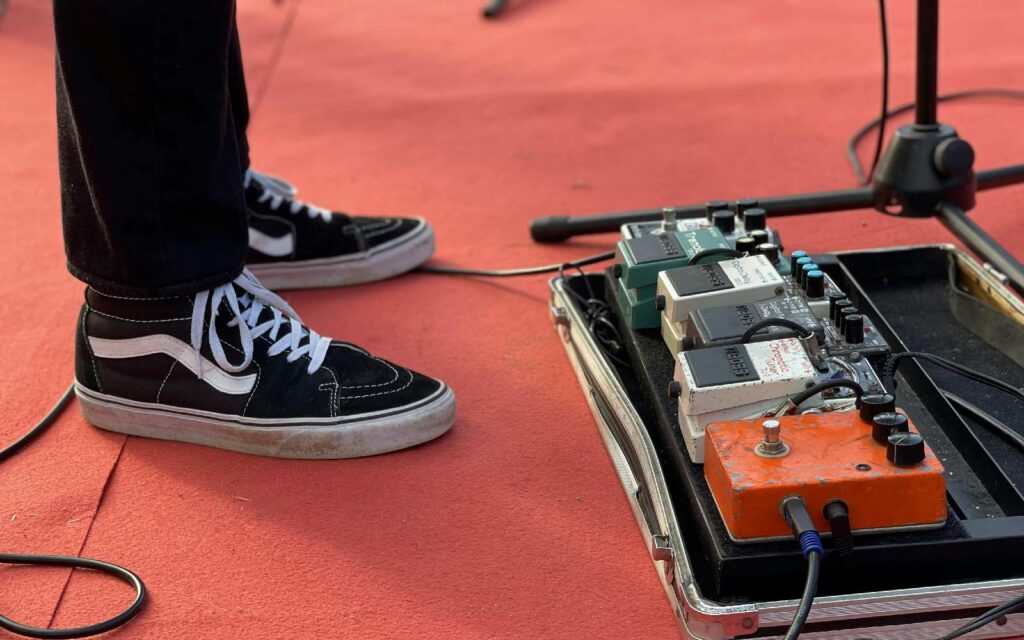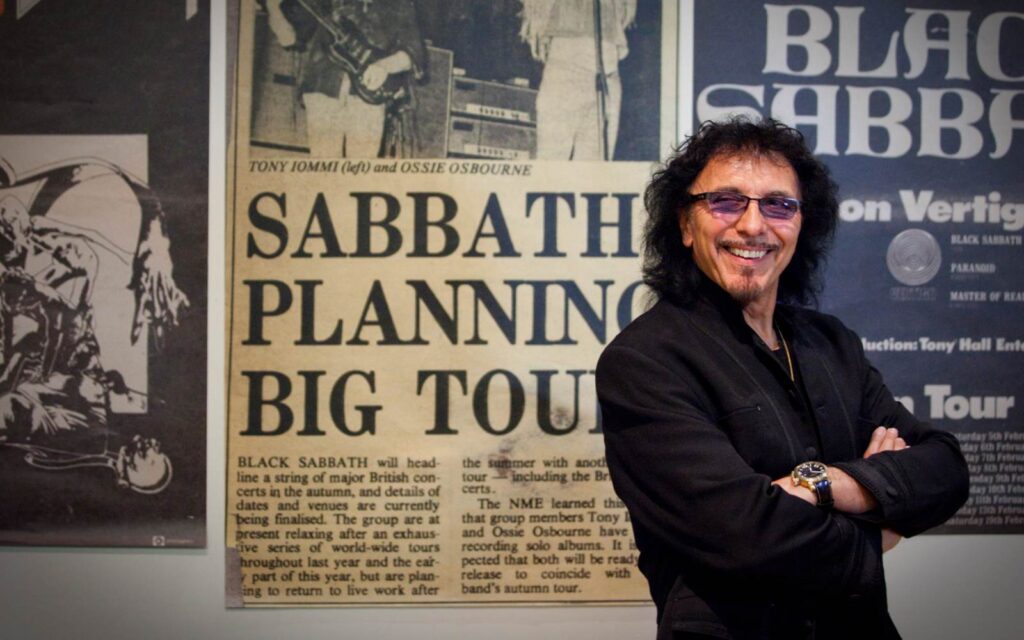K.Flay is an artist who has built a solid foundation on doing music her own way, with her own vision as a creative.
The K.Flay sound blends rock, industrial and elements of rap and hip-hop, into her own, evolving brand of music.
It’s evocative of moments in time, her lyrics and performance capturing the essence of times and places. Her new record MONO is no different, singles like “Raw Raw”, “Irish Goodbye” and “Shy” offering fans a taste. Ahead of MONO’s release, we had a chat to K.Flay about how the record came about, performing it all live, and the unexpected hurdle of losing her hearing while making it.
We’ve been loving “Raw Raw”. How did the album MONO begin?
The album began, sort of like any other album, in that I was beginning to start writing and start thinking about themes. I think, right at the outset, one of the differences with this record was that I had the notion was that “rigour” was going to be a part of the process, and discomfort. I was looking to collaborate with new producers, and kind of get out of my comfort zone creatively in the studio sense.
And I did just have that word: “rigour” kind of going through my head as I was approaching it, and I really wanted to push myself to the limit creatively.
Read up on all the latest features and columns here.
Of course, you know, I couldn’t have expected or anticipated that I would lose my hearing halfway through, or part way through making it. So those intentions of like, “rigour” and “discomfort” really got pushed to the next level. But that was sort of the overarching ethos of the record, was really getting outside of my comfort zone, and I feel like I did that.
And you know, “Raw Raw” is about that feeling. It’s about being vulnerable and outside of a place that feels comfortable and familiar. And of course, that’s where typically the best things happen.
Where and how did the demos for songs begin?
So all the demos I was writing here in Los Angeles. I had just gotten off the tour for my last record Inside Voices / Outside Voices, and I was feeling you know, just really energised.
I think part of the process for me, particularly when it comes to writing is: creating music, going on tour and then generating a lot of energy and ideas about what I want to do next, and kind of creating like pent up energy.
I often have aspirations, “Oh, I’m gonna be on tour and start writing the next record.”
I don’t know, for me, that’s never really worked. I think when I’m on tour, I’m fairly just in that state, I’m not really in a [mindset of] “I’m going to start generating new songs and ideas”.
I’ll sometimes start a few little things, but it’s really about almost creating a sense of urgency and tension, like, “I need to write. I need to start making new stuff when I get back.”
So I began writing the demos. And I think at the outset, I had it in my mind that I wanted to make a real rock record. My second record Every Where Is Some Where, it was kind of the first record that really kind of put me into that more mainstream rock space, and I wanted to make like the older sibling of that record.
How do you feel losing half of your hearing ultimately influenced your work? It definitely hasn’t slowed you down, at least from the outset.
I think the hearing loss, well, it influenced my work in a lot of different ways.
One of the biggest ways was that it just set me free from rules. I think when you think about engineering and production, right, you can kind of get in these patterns or traps of like: “Well, this is how I should do it. This is how I should compress this. This is how I should treat this vocal.”
At the end of the day, there are no “shoulds”. It’s just about feeling and about experimentation, so the hearing loss really put me in that space of experimentation.
That made it really fun and really easy to make this record. Because I think when you’re experimenting, you’re curious and you’re discovering, and that’s a really joyful, gratifying process.
I think the other component of the hearing loss was that I felt real, real discomfort. As I mentioned, that was one of the things I was seeking in making this record and I got it like, 500 fold.
And being in that place of discomfort, not even having my balance back, that took months and months to get back, like I just wasn’t steady.
And that really encouraged me to do some new and hopefully interesting things with this record.
How does your live set vary from the recorded version of songs? Are you performing with a band?
The live set definitely varies from the recorded versions of the songs [and] I do play with a band. We play as a three piece, so it’s me, a drummer and a multi-instrumentalist who primarily alternates between guitar and bass, and then I play guitar and bass on some songs.
I think the live set is heavier than the record in a lot of ways. The show has kind of evolved into a real rock show and I have discovered over time that what I like about going to shows is having catharsis and having a feeling of toughness when I leave, like if I can leave a venue and be like “I feel like a fucking badass,” I like that feeling. And so that’s largely the feeling I’m seeking to create.
The other thing with the live set, we run everything on Ableton, there’s just so much flexibility and creativity within that software to make a dynamically really interesting experience.
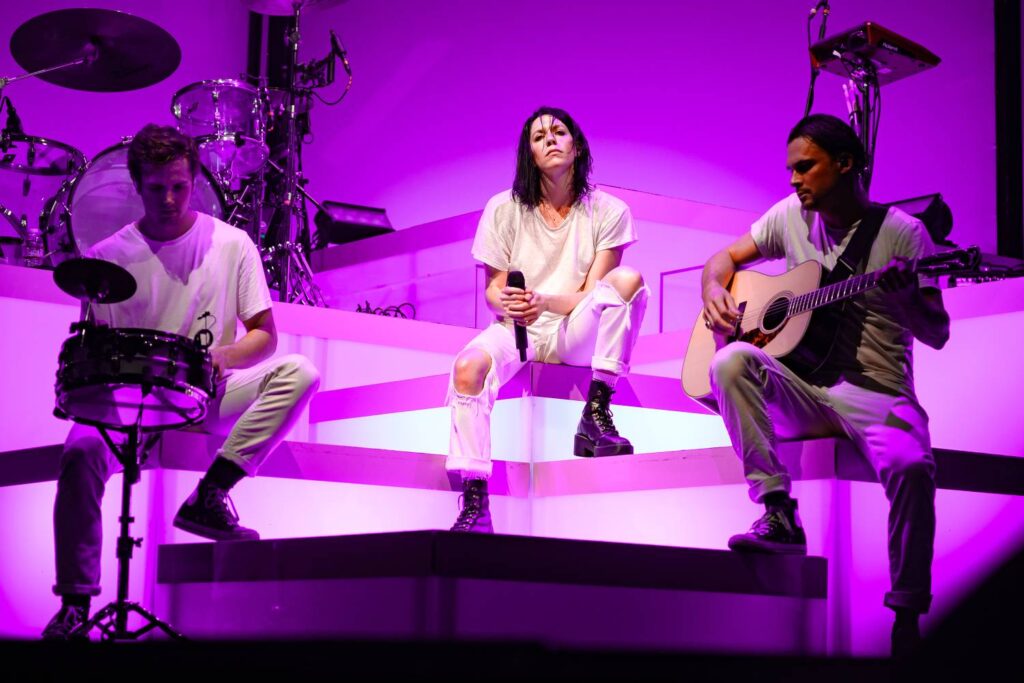
One of the things I really work with my music director on is like “how do we link songs? How do we connect them? How do we manipulate tempo? How do we create jarring moments where we were in one song, and then all of a sudden we’re entering another song from a different era?” Right? And “how do we juxtapose?” I’ve got a few more politically leaning songs, we’re working on a set right now, where those are in a section of the set and creating some thematic moments as well. So I really enjoy that process.
I was actually talking to a friend about this the other day. I’ve had songs that on record, they felt good or okay, like I have a song called “This Baby Don’t Cry”, which I’ve always loved.
And it’s only on this past tour, where I feel like we finally cracked the code on how to play it live, and the spirit of the song, like capturing the punkiness and the playfulness. So the other thing I really love about the live set is it gives the songs a chance to keep reviving themselves and recontextualisating themselves. So [that’s] very exciting for me.
There’s a lot of elements of rock, electronic, pop and some industrial in your music. How do you define it?
At this point in time, I feel like I’m making modern American rock music.
But I think that [the] genre of rock is quite broad, and I think it has a lot more to do with attitude and spirit than it does with sonics specifically. However, you know, this record is largely a guitar record.
There are a few songs where we don’t really employ guitars and bass guitar, but for the most part, that’s the driving instrument. So I feel like that’s where I’m at right now.
How was MONO ultimately recorded and mixed? Was it one big blocked out session in the studio or multiple sessions and mixes and songs that came together?
MONO was recorded across a variety of studios in Los Angeles, all of which are home studios.
I’ve essentially, and I think I’ve commented on this in the past, I so rarely work out of a traditional studio. I find them really sterile and not motivational and I get uncomfortable. I don’t think I’m in a good place to record vocals and feel loose.
So pretty much everything was recorded in home studios that have been treated and outfitted, so they’re proper studios in a house.
A cool thing that we did on this record that I haven’t done in the past is, Paul Meany who executive produced the album, at his studio we set up an amp room and we set up a drum room and we had Aric Improta (Night Verses, Fever 333), who’s an amazing, fantastic drummer.
He drummed across this record, so that there is a consistent feel and tone and spirit across all the songs which I just had never done before. I’ve never had that kind of unifying element with regard to drum recording. So I feel like that was really important.
As I say, we had the amp room where we re-tracked some guitars, I also just did a lot of overdubs. And also, for a lot of songs, we layered, like a DI bass or a DI guitar with an amped guitar just to create that actual movement of air and kind of a depth of sound.
And again, I feel like we got some really, really amazing tones. I think for me, I wanted this record to feel really saturated sonically, and that was a big part of it.
The record was mixed by Michael Freeman, he mixed my last record. Michael and I have a really good workflow at this point. He knows my taste, he knows kind of the starting point, especially for my vocals, and for guitar treatment. And we took the songs one by one. I think for me, what was different of course, was I was listening to these mixes in mono.
Michael and I actually talked about this, obviously there are mix engineers out there who do their first couple of mixes in mono, mix entirely in mono, or at least utilise mono as a way to examine and think about their mixes.
So, I have this new perspective on the songs and I think for me, what it helped to do was distil “Okay, what are the important elements of the songs?”
Because when you don’t have stereo, you can’t pan one guitar on one side and have it on the other, it’s like, you kind of have to make that choice, a little bit of like, “well, which guitar are we going to feature? Which part are we going to feature?”
So I think it helped me to refine a little bit, my perspective on what mattered in the mix.
What’s next for K.Flay?
Well, I’m about to tour all over the world playing this record. And I can’t announce all of the tour dates that I’m doing, but I will be doing many of them.
Thanks for your time! As a final note have you got any anecdotes or funny stories from making MONO?
I will say one anecdote that I was recently telling, is a song “Spaghetti” that’s on it was never supposed to be on the record.
It was just a song that I made with my girlfriend, like to try to help me heal from my hearing loss and get back into the studio and just feel comfortable. Paul [Meany] had asked me to send him everything I had made, like, in the last however much time and so I included that.
He was like: “Dude, what’s going on with “Spaghetti”? I was like “Nothing. Sarah and I made it… just whatever.”
And he’s like “No, dude, that song. That’s like, that’s a big song that’s important for this record.”
And so, I think one of the joys of collaboration, and perhaps this is a good note to end this chat, is that [other] people are able to see things that you can’t.
It’s like if you break a glass vase on the ground, you always want somebody else to look at the floor, because they’re going to find a shard of glass you missed.
And I think that’s the power of teamwork when it comes to to making a record and you know, that goes across production, that goes across mixing, that goes across sound selection and song selection as I just mentioned. So this record was really a very, very beautiful exercise in teamwork and, yeah, I loved making it.
Keep up with K.Flay here.
